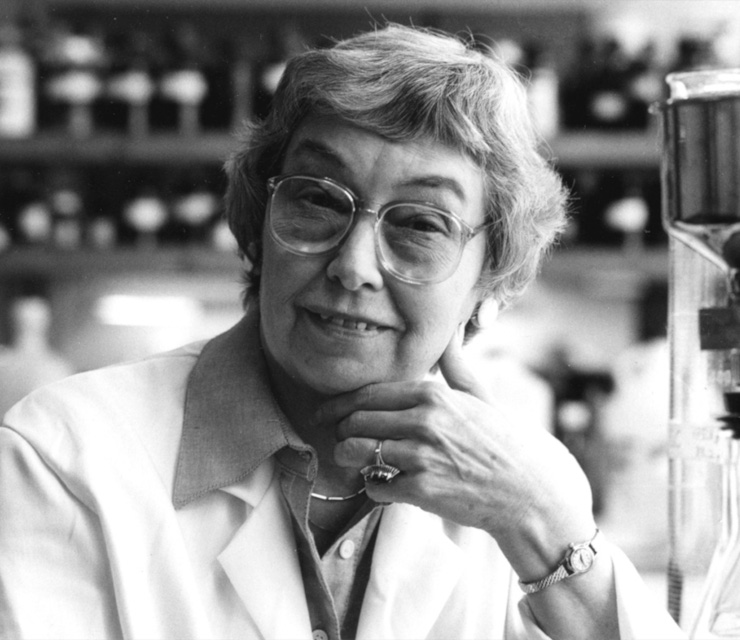From Hypothesis to Advances in Cancer Research
How a cancer researcher in the 1950s persevered when others were skeptical about her hypothesis — and ultimately changed the scientistic mindset.

It was the early 1950s and two female scientists at Sloan Kettering were peering into a new electron microscope when they saw something unusual.
Both of them, Charlotte Friend and her co-worker Cecily Selby, had already earned their PhDs in bacteriology and were conducting further research on Ehrlich ascites carcinoma, a type of mouse tumor often used in cancer studies. Suddenly, the women noticed that the arrangements of particles in the tumor cells looked similar to cells infected with certain types of viruses. Could this point to a possible link between viruses and cancers?
At the time, the hypothesis that viruses can cause cancer was in its infancy — a few researchers had pondered the idea, but most scientists viewed it as illogical. To make researchers consider this seemingly absurd concept required a major shift in scientific mindset. But Friend, who would go on to become the first female President of the New York Academy of Sciences, was not the type of person to give up easily.
Growing Up
A daughter of Jewish immigrants, she was born in New York City in 1921 in Lower Manhattan, and developed her interest in medicine early — possibly because her father died from a heart infection when she was three.
After the stock market crash of 1929, her family was forced to go on public assistance, but despite growing up poor Friend was very focused on school and education. At ten, she had already mapped a scientific path for herself, detailing it in her school essay “Why I Want to Become a Bacteriologist.” She studied at Hunter College, received her Ph.D. at Yale, and continued her research as an associate professor in a program run jointly by Sloan Kettering and Cornell University.
Friend spent several years testing the viral-cancer-link hypothesis on mice. After multiple attempts, she showed that it was possible to transmit leukemia from one rodent to another, by injecting one mouse with tissue taken from another.
Overcoming Skepticism and Ridicule
Conducting research proved easier than presenting its results. When Friend first spoke about her findings at the American Academy of Cancer Research, she was met with such strong skepticism and ridicule that the memory stuck with her for the rest of her life. Twenty years later she described that experience in her presidential address to the American Academy of Cancer Research: “By no stretch of the imagination could the violent storm of controversy that erupted after the presentation have been anticipated.”
She bravely submitted to the barrage of questions despite the emotional turmoil, but didn’t necessarily manage to convince the attendees of her theory. Despite the cold shower of skepticism, Friend remained convinced of her idea, and continued to pursue it.
In 1957 she published her controversial findings in the Journal of Experimental Medicine. Shortly after, well-known researcher Jacob Furth replicated her results. Other scientists began pondering similar hypotheses, and the idea that cancer can be caused by a virus started to take hold. The scientific mindset was changing, finally.
An Overdue Recognition
By the 1960s Friend’s work was receiving its due academic recognition. In 1962 she became a recipient of the Alfred P. Sloan Award for Cancer Research. She helped establish the concept of the oncovirus, a virus that causes cancer. Her research is now used in developing HIV vaccines, and the leukemia virus she discovered, which was named after her, serves as the model for viral leukemogenesis studies.
But Friend wasn’t finished. In 1966 she began working at the new medical school at Mount Sinai Hospital, directing their Center for Experimental Cell Biology. While there, she made another crucial oncological discovery: cancer cells can be stopped from multiplying and revert to being normal cells through a chemical treatment by a compound called dimethyl sulfoxide. Such treatment could lead to new ways of fighting cancer, different from the traditional chemotherapy that works by killing tumor cells.
In the 1970s, Friend finally received the recognition she deserved. She was asked to serve as President of the Harvey Society and the American Association for Cancer Research. In 1976, she was elected into the National Academy of Sciences, which was a great scientific honor. Only a year later, she was serving as the New York Academy of Science’s Chair of the Fellowship and Honorary Life Membership committee, charged with reviewing nominations from Academy Members.
The Impact of the Academy’s First Female President
Within another year, Friend became the first female President of the Academy. The appointment was well-deserved for such a visionary pioneer of the sciences, as the Academy’s newsletter noted: “The more than one hundred papers she has published have been in such fields as viral oncology, regulation of cell growth and differentiation, virus/host-cell relationships, immunology and molecular biology.”
While working as the Academy’s President, Friend continued her scientific quests, all the while serving as a role model for young female researchers who pursued a science career at a time when few women were able to choose that path.
Also see:
